WTO Meeting Kicks Off to Challenges; “Big Deals Unlikely”

With economic challenges and “geopolitical tensions” threatening international commerce, the World Trade Organization faces a difficult job at the 13th Ministerial Conference, according to AFP.
What’s going on: At the meeting, which began Monday in Abu Dhabi and is expected to conclude on Thursday, “[t]he WTO is hoping for progress, particularly on fishing, agriculture and electronic commerce. But big deals are unlikely as the body’s rules require full consensus among all 164 member states—a tall order in the current climate.”
- The organization could also decide on whether to expand a 2022 TRIPS waiver to include COVID-19 therapies—a move that would be damaging to manufacturing in the U.S.
- “The WTO committee in charge of discussing intellectual property rights recently told the WTO General Council that it had been unable to reach agreement on the issue after more than 18 months of discussion,” POLITICO reports. “That could signal the end of the road for efforts to expand the waiver, but [there is] fear it could still be approved by ministers at MC13 as part of the final horse-trading that occurs to reach some deal.”
Reform needed: “Speaking on the first day of MC13, WTO Director-General said that ‘multilateralism is under attack,’ highlighting a need to ‘reform the multilateral trading system’ and boost international cooperation,” according to AFP.
- European Trade Commissioner Valdis Dombrovskis echoed the call for reform, saying, “The world has changed. And institutions like the WTO need to evolve too. We are faced with crises wherever we look.”
No waiver expansion: One change that should not take place, however, is the TRIPS waiver expansion, the NAM told U.S. lawmakers ahead of the WTO meeting. NAM President and CEO Jay Timmons met with Okonjo-Iweala and WTO Deputy Director General Angela Ellard in Geneva last March to discuss the waiver.
- “The proposed expansion of the TRIPS waiver to include diagnostics and therapeutics would jeopardize American innovation, endanger U.S. jobs, undermine future investment and research and development for lifesaving products that are fundamental to fighting global crises, including many diseases and health conditions other than COVID-19, and pose serious safety concerns,” the NAM and six association partners told Secretary of State Antony Blinken, Commerce Secretary Gina Raimondo, U.S. Trade Representative Katherine Tai and White House Chief of Staff Jeffrey Zients last week.
Digital commerce: There are some concrete actions that should be taken regarding the WTO, the NAM told the House Ways and Means Subcommittee on Trade this month.
- The USTR should reverse a decision it made in October 2023 to “drop the longstanding digital trade position of the U.S. at the WTO. This longstanding position, which has clear bipartisan support from the U.S. Congress, seeks to protect cross-border data flows, prohibit costly data localization requirements abroad, defend American digital products from discrimination and protect American IP.”
- And the U.S. should urge the WTO to institute a permanent e-commerce moratorium. Allowing the current “moratorium on customs duties for electronic transmissions … to expire would inject uncertainty and impose unfair burdens on manufacturers in the U.S.”
The last word: “The WTO remains a critical forum to advance free and fair trade globally,” said NAM Director of International Policy Dylan Clement.
- “The outcome of the 13th WTO Ministerial Conference is important because an expansion to the TRIPS waiver or letting the e-commerce moratorium expire could significantly harm manufacturers in the United States. As such, manufacturers will be watching the WTO Ministerial this week very closely.”
Arizona: Manufacturing’s Crossroads
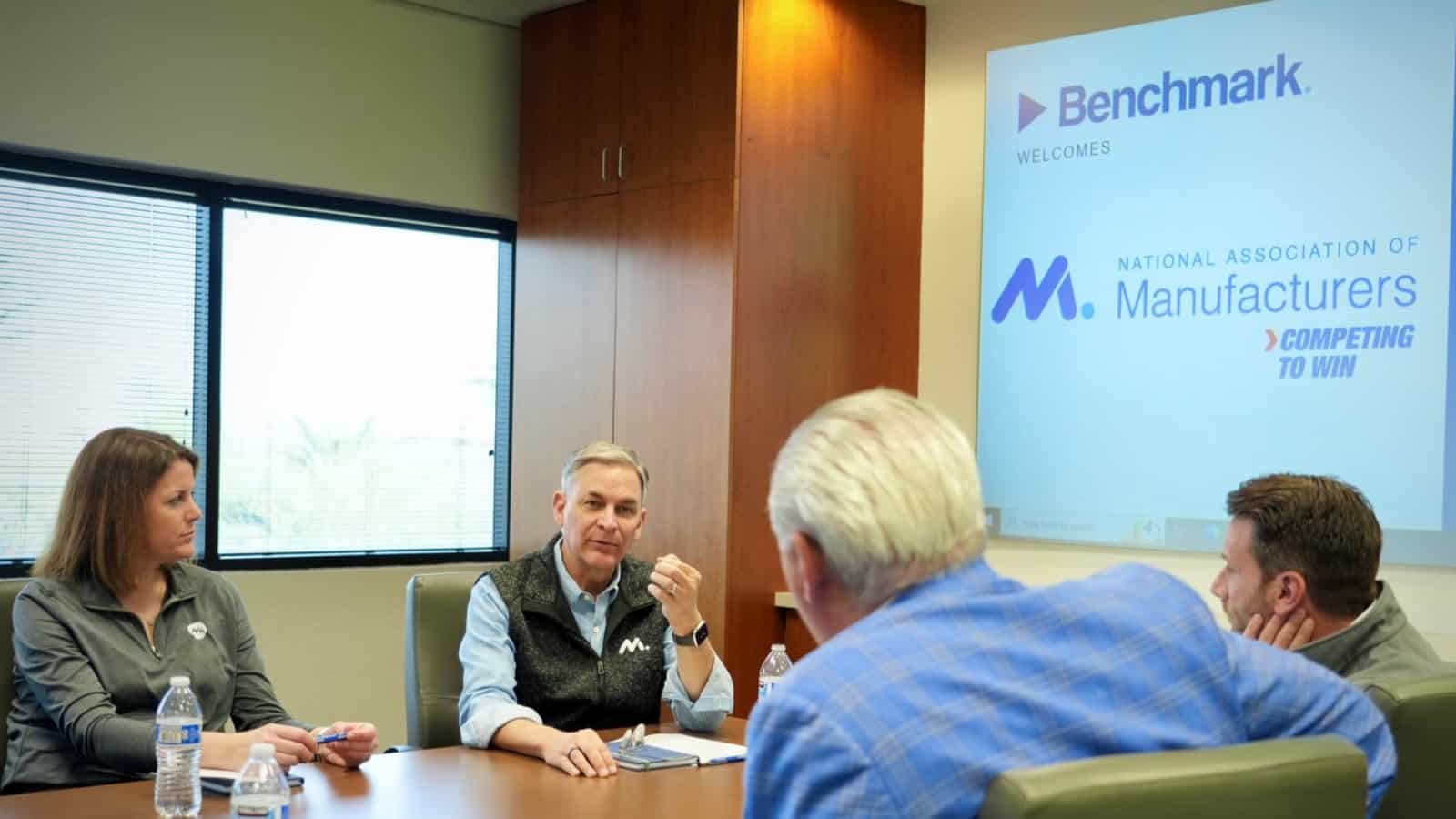
In the heat of Arizona’s “Silicon Desert” and surrounding communities, the future of America’s global competitiveness and climate goals aren’t just being forged—they also hang in the balance.
Last week for the first time in 2024, the NAM brought its Competing to Win Tour to Arizona, and that stark contrast between the status quo and the probable future was on display in Phoenix at global semiconductor equipment manufacturer Benchmark and small manufacturer Valley Forge & Bolt and at Resolution Copper in Superior.
- NAM President and CEO Jay Timmons, Manufacturing Institute President and Executive Director Carolyn Lee—who leads the NAM’s 501(c)3 workforce development and education affiliate—and Arizona Chamber of Commerce & Industry President and CEO Danny Seiden met with local manufacturers to gain their perspective and insights.
Why it matters: The Biden administration and Congress have secured key measures to bolster manufacturing in the U.S., including the NAM-championed CHIPS and Science Act and tax credits in the Inflation Reduction Act to manufacturers investing in advanced production and energy projects. But raw material, workforce and tax and regulatory policy challenges threaten to undermine policy aspirations.
Silicon Desert expansion: With the CHIPS and Science Act poised to transform the sector, Benchmark President and CEO Jeff Benck and Executive Vice President and Chief Operating Officer Dave Valkanoff led the tour of their state-of-the-art Phoenix facility.
- In a good spot: Benchmark is well-positioned for the coming growth in semiconductor equipment demand. It is focused on securing its workforce and navigating a complex regulatory landscape to maximize the opportunity.
- Workforce woes: Even with the NAM and the MI’s Benchmark-supported Creators Wanted campaign boosting the industry’s image and the MI’s FAME initiative training thousands of technicians, finding skilled labor remains the top challenge. Benchmark advances earn-and-learn programs and partnerships with Arizona State University and community colleges to help fill the pipeline, actions that, according to Lee, “can help change the game.”
- Red tape delays: Regulatory hurdles pose obstacles. Benchmark seeks streamlined permitting and sensible rules to maintain their global edge.
- Bullish outlook: Benck is optimistic about the future of U.S. manufacturing and semiconductor demand. Investments in people and technology position the company well to deliver the next generation of innovation.

Taxes and immigration: The NAM’s return visit to Valley Forge & Bolt, after a stop last year with Sen. Kyrsten Sinema (I-AZ), shone a spotlight on the real-world impact of stalled tax policy and the urgent need for reform.
- Valley Forge & Bolt saw record sales in 2023 thanks to 2017 tax reforms boosting its equipment upgrades. Now, with provisions like full capital investment expensing stalled in Congress, orders have slowed.
- CEO Michele Clarke and COO Bret Halley made the case for R&D expensing, interest deductibility and a return to full capital investment expensing. Without these, they said, job growth and America’s manufacturing competitive edge are at risk.
- Skilled workers needed: Despite its success, Valley Forge says finding skilled workers is a constant struggle. Immigration reform is a must to secure the right talent pipeline, said Clarke. “Did you notice our engineers? Most of them are under 30 because we’re snatching them right out of college,” added Clarke. “The engineering talent in this country is dwindling, and we’re not authorizing enough green cards. I, myself, was a green card holder before I became a citizen.”
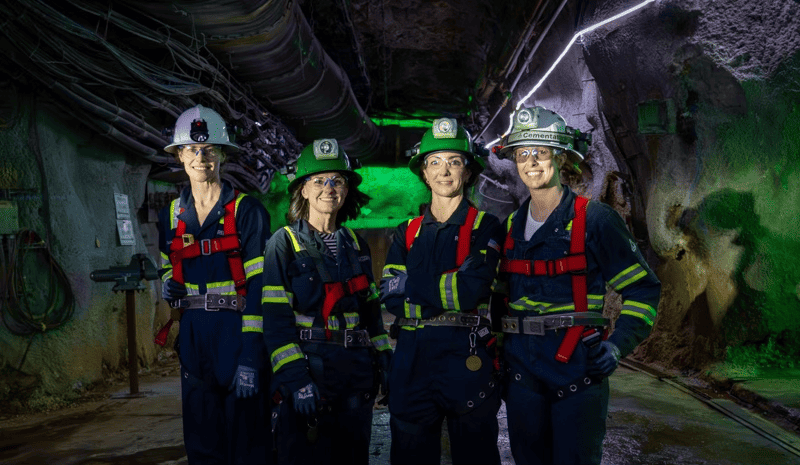
Policy roadblocks: The NAM’s visit to Rio Tinto’s Resolution Copper site highlighted the urgency of permitting reform in the face of critical mineral needs.
- Copper’s critical role: Copper is essential for clean energy. Electric vehicles, solar power grids and wind turbines all demand huge quantities. Yet, the U.S. remains heavily reliant on imported copper, jeopardizing progress.
- Massive potential: The domestic solution lies within the stalled Resolution Copper mine. With its potential to supply 25% of U.S. copper demand, it’s poised to be a key piece of the puzzle.
- Project in limbo: Despite a 350-strong workforce modernizing and maintaining the mine, permitting delays stifle the project’s full impact.
- Sustainable practices: “Resolution Copper is the future of eco-conscious mining,” said NAM Managing Vice President of Brand Strategy Chrys Kefalas, who toured the site. “Their team innovates sustainable practices, leads in water conservation and even supplies 7 billion gallons of water to Arizona farms. And what is more, it isn’t just the facts of the matter or what you saw that drives this point home, but the people who have worked on the site for years make all that clear with the pride they have about the project and their determination to see Resolution Copper through to making lives better for everyone.”
- Jobs and growth: Led by President and General Manager Vicky Peacey, the project promises to contribute $1 billion annually to the economy and more than 1,500 Arizona jobs. “This is about people, jobs and supply chains; and it’s also about realizing clean energy ambitions at the speed and scale that climate goals demand,” said Kefalas.

The bottom line: “The future of U.S. manufacturing might hinge on these contrasting stories. Are we a nation that champions innovation, attracts and keeps the brightest here, supports our manufacturers and tackles climate goals with homegrown solutions, or one that stalls progress in its own backyard,” said Timmons.
- “Arizona is at the epicenter of American manufacturing’s next chapter, and with smart policies and fewer unforced errors at the federal level, we can clear the runway for growth,” added Seiden.
Manufacturing Leaders: Congress Must Act Now
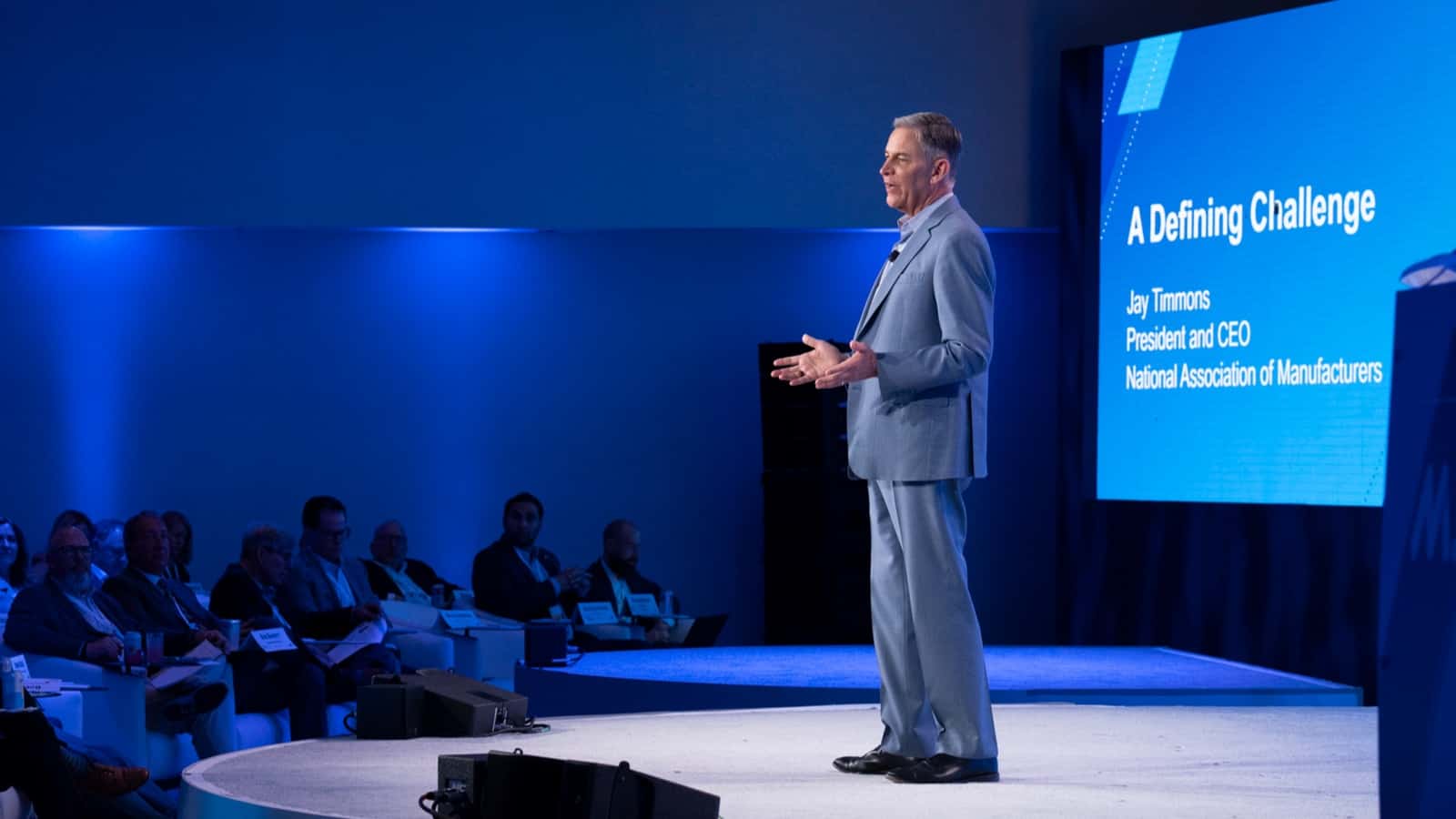
It’s imperative for the strength of not only manufacturing in the U.S. but democracy worldwide that Congress move now to advance a security package and government funding, said NAM President and CEO Jay Timmons, Johnson & Johnson Executive Vice President and Chief Technical Operations & Risk Officer and NAM Board Chair Kathy Wengel and Rockwell Automation Chairman and CEO and NAM Board Vice Chair Blake Moret on Monday.
What’s going on: “For the strength of our democracy here at home and the protection of democracy around the world, manufacturers are calling on Congress and President Biden to act swiftly to keep the government open, pass pro-growth tax provisions, secure our border and approve urgently needed aid for Ukraine,” the three manufacturing leaders told Congress ahead of Biden’s meeting with congressional leaders.
Why it’s important: In March 2022, shortly after Russia’s invasion of Ukraine, the NAM Board passed a unanimous resolution condemning the act and expressing solidarity with the Ukrainian people in their fight for independence.
- In February 2023, Ukrainian President Volodymyr Zelenskyy spoke to the NAM Board in a speech to the American business community. “We will prove that democracy is stronger than tyranny,” Zelenskyy said in that address. “When Russia loses, we will prove that terrorist states cannot overcome the power of a united democratic world.”
What should be done: Timmons, Wengel and Moret hammered home the criticality of swift action by Congress.
- “With time running short, manufacturers are looking to our leaders to act. They can address all of these priorities. In fact, they must address them all—for the future of our industry, the security of our country and the defense of democracy.”
NAM Board Leadership: Act Swiftly on Manufacturing Priorities and Ukraine Aid
Phoenix, AZ. In advance of the White House meeting with President Biden and congressional leadership, National Association of Manufacturers President and CEO Jay Timmons, NAM Board Chair and Johnson & Johnson Executive Vice President and Chief Technical Operations & Risk Officer Kathy Wengel and NAM Board Vice Chair and Rockwell Automation Chairman and CEO Blake Moret released the following joint statement:
“For the strength of our democracy here at home and the protection of democracy around the world, manufacturers are calling on Congress and President Biden to act swiftly to keep the government open, pass pro-growth tax provisions, secure our border and approve urgently needed aid for Ukraine.
“Two years ago, the NAM Board unanimously passed a resolution ‘stand[ing] with the people of Ukraine in their fight to preserve freedom and independence.’ Last year, President Volodymyr Zelenskyy spoke to the NAM Board of Directors in an address to the American business community, where he underscored that ‘democracy is stronger than tyranny’ and reminded us of the importance of standing firm for our shared values.
“With time running short, manufacturers are looking to our leaders to act. They can address all of these priorities. In fact, they must address them all—for the future of our industry, the security of our country and the defense of democracy.”
Timmons echoed this message in remarks to the NAM Board this afternoon.
BACKGROUND:
On March 8, 2022, the NAM Board of Directors passed a resolution “stand[ing] with the people of Ukraine in their fight to preserve freedom and independence” and “reaffirm[ing] the commitment of this association and our industry to sustaining and safeguarding democracy and democratic institutions not only here at home, but also abroad.”
On Jan. 24, 2023, the NAM and the Ukrainian League of Industrialists and Entrepreneurs signed a Memorandum of Understanding to formalize manufacturers’ commitment to supporting Ukraine, and the NAM and its member companies participated in a “Rebuilding Ukraine” roundtable with Ukrainian manufacturers and senior Ukrainian government officials.
Then, in March 2023, the NAM traveled to Belgium, France, Germany, Poland, Switzerland and the United Kingdom for a series of meetings with international officials, government ministers, ambassadors, business association leaders and NAM member companies to strengthen alliances and underscore at every opportunity our support for Ukraine and democracy more generally.
-NAM-
The National Association of Manufacturers is the largest manufacturing association in the United States, representing small and large manufacturers in every industrial sector and in all 50 states. Manufacturing employs nearly 13 million men and women, contributes $2.85 trillion to the U.S. economy annually and accounts for 53% of private-sector research and development. The NAM is the powerful voice of the manufacturing community and the leading advocate for a policy agenda that helps manufacturers compete in the global economy and create jobs across the United States. For more information about the NAM or to follow us on Twitter and Facebook, please visit www.nam.org.
State of Manufacturing: Strong, But Not Guaranteed
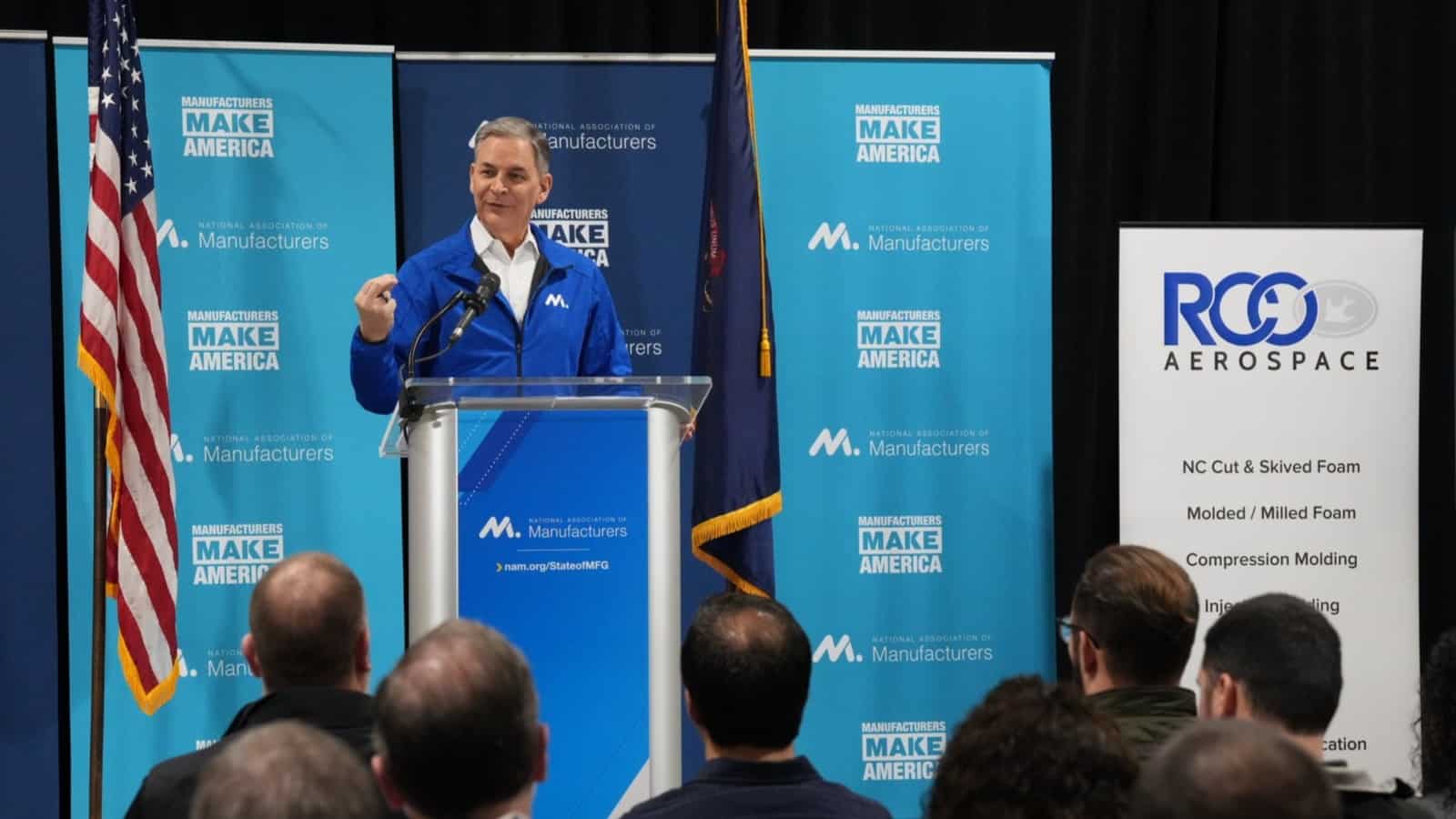
What’s the state of manufacturing in the U.S.? Strong and resilient—but under threat.
That was the message delivered by NAM President and CEO Jay Timmons and other speakers at the NAM’s 2024 State of Manufacturing Address at RCO Engineering in Roseville, Michigan, on Thursday.
- Attending the address were nearly 100 RCO Engineering team members—some of whom are second- or even third-generation manufacturing workers—as well as local education leaders, including Macomb Community College President James O. Sawyer IV and Macomb Intermediate School District Superintendent Michael R. DeVault.
- The address was the keystone event of this week’s launch of the 2024 Competing to Win Tour, an opportunity to visit local manufacturers and report on where the industry stands at the start of 2024.
A place of strength: “The state of the manufacturing industry depends on the people in it,” Timmons said in remarks covered by POLITICO Influence (subscription). “And we are now 13 million strong—the largest in more than 15 years. If we can continue on this trajectory, this resurgence, imagine what the state of manufacturing might look like in 2030.”
- Johnson & Johnson Executive Vice President and Chief Technical Operations & Risk Officer and NAM Board Chair Kathy Wengel echoed that sentiment in her opening remarks. “Manufacturers are improving the quality of life for everyone. … Together, we can lead the way.”
- And Michigan Manufacturers Association President and CEO John Walsh told the audience at RCO Engineering, “You are making parts here that are going everywhere. It’s a phenomenal story for us in Michigan. It not only helps you as employees here, but it helps your families, it helps your communities. It builds our state. It builds our nation.”
- “Manufacturing … is an industry that is vital to our economic competitiveness,” said Macomb County Executive Mark Hackel. “In Macomb County, we’re not just witnessing the growth of manufacturing; we’re actively contributing to it. What we are doing here is creating an environment where innovation thrives and where manufacturers can grow as well as compete.”
- RCO Engineering General Manager Jeff Simek agreed. “The manufacturing brand is coming back, and it’s coming back alive—and you guys are a big, huge piece of that,” he said to loud applause.
Fork in the road: But continued manufacturing strength isn’t guaranteed, Timmons said. Rather, it’s in large part contingent on sound policy decisions by U.S. leaders.
- “We will head in the wrong direction if Congress lets taxes go up on small businesses when rates expire next year,” Timmons said. “Or if they hit you with even more regulations—regulations even harsher than ones they have in Europe. Or if they fail to solve the immigration crisis because they put politics over good policy. Or choose trade barriers rather than trade agreements, or … abandon our allies overseas and put our national security at risk.”
- The recent regulatory onslaught by federal agencies—which Timmons discussed with Fox Business earlier this week—must stop and be replaced with sensible rulemaking done in cooperation with manufacturers, he said.
- He cited the Environmental Protection Agency’s recently finalized, overly stringent standard for particulate matter and the Biden administration’s decision to freeze liquefied natural gas export permits. This “forc[es] our allies, like Europe and Japan, to buy dirtier energy from countries we can’t trust, potentially enriching the likes of Russia … undercut[ting] our most basic national security objectives,” Timmons said.
No new taxes: The NAM’s message to Congress on taxes is simple: “No new taxes on manufacturers in America,” Timmons said.
- “And while we’re at it, Congress should bring back some of the tax policies that made it easier for manufacturers to invest in the future.”
On immigration: The U.S. needs a common-sense solution to immigration, and it needs it now, Timmons said.
- While manufacturers may not like every piece of the bipartisan border deal that was recently killed in the Senate, “here was my test: Does it make us more secure than we are today? Yes. Does it make our workforce stronger than it is today? Yes. And does it help our allies overseas? Yes,” said Timmons.
Come what may: No matter what the November elections bring, manufacturers will continue to do the jobs so many people depend on them to do, Timmons concluded.
- “Our commitment is to work with anyone, and I truly mean anyone, who will put policy—policy that supports people—ahead of politics, personality or process. We will stand with you if you stand with us in advancing the values that have made America exceptional and keep manufacturing strong.”
GlobalFoundries to Get $1.5 Billion in CHIPS Funding
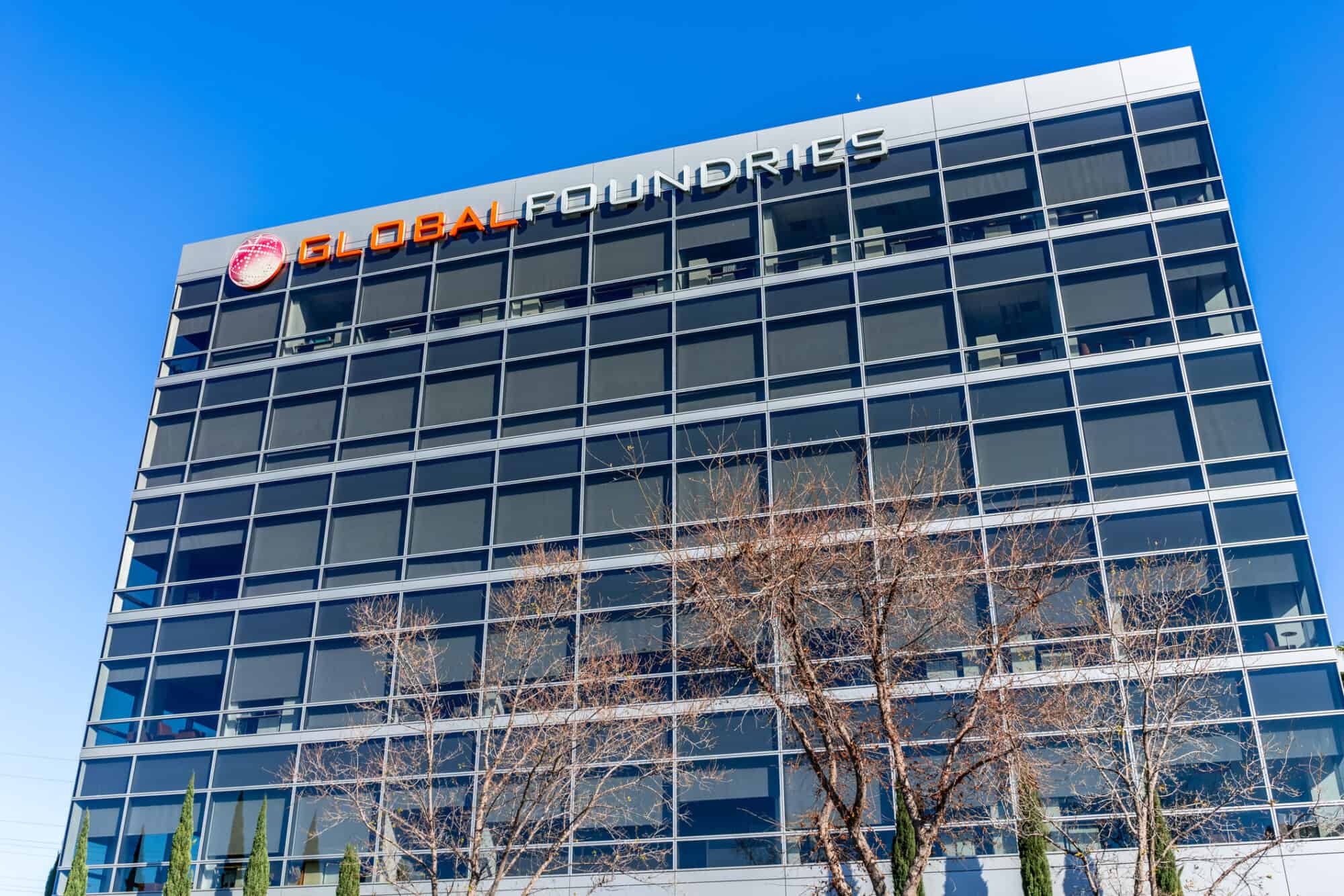
Semiconductor maker GlobalFoundries Inc. will be the first recipient of funding under the NAM-supported 2022 CHIPS and Science Act, CNBC reports.
What’s going on: “The U.S. government is awarding $1.5 billion to GlobalFoundries to subsidize semiconductor production, the first major award from a $39 billion fund approved by Congress in 2022 to bolster domestic chip production.”
- The Malta, New York–based GlobalFoundries—the largest U.S. manufacturer of customized semiconductors and the world’s third-biggest chipmaker—plans to use the funds to build a new chip-production facility in its hometown and expand existing facilities there and in Burlington, Vermont.
- The Malta facility will manufacture high-value semiconductors not currently produced in the U.S., Commerce Secretary Gina Raimondo said.
- In addition to the grant, the federal government is also offering GlobalFoundries $1.6 billion in loans.
Why it’s important: “The chips that GlobalFoundries will make in these new facilities are essential chips to our national security,” Raimondo said on Sunday, adding that the “agency is in active talks with numerous applicants and expects to make several announcements by the end of March.”
- In January, Commerce announced it was awarding defense contractor BAE Systems $35 million under the CHIPS Act.
Our role: The NAM—which helped secure several manufacturing priorities in the final CHIPS Act legislation—welcomed the news.
- “Congratulations to [GlobalFoundries]!” the NAM wrote in a social post Monday. “The NAM-championed CHIPS and Science Act is strengthening manufacturing in the U.S. We will continue to work with Congress and the White House to enact permitting reforms that will help speed the construction of these vital projects.”
NAM to House: Overturn Air Standard
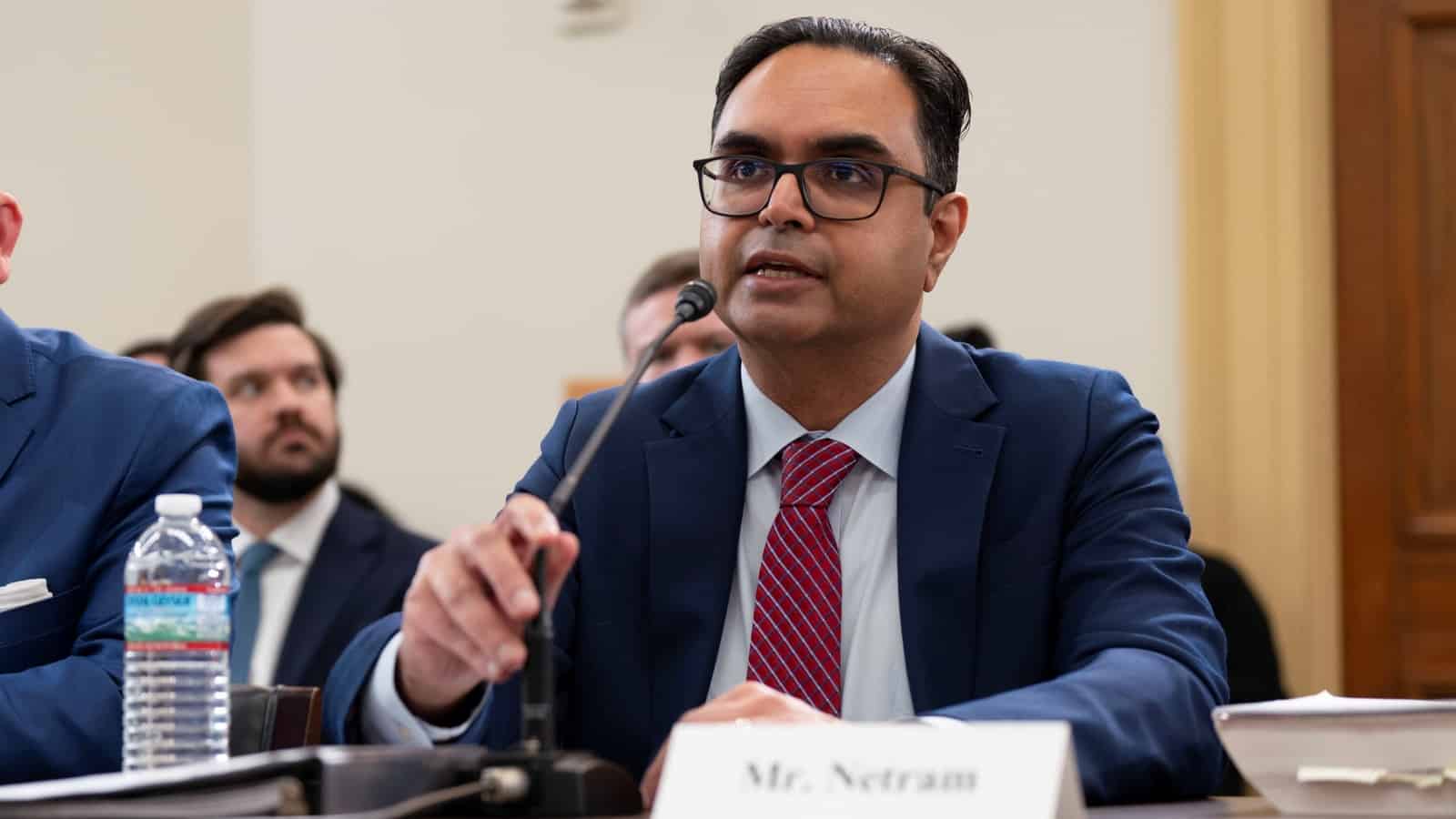
The Environmental Protection Agency’s recently finalized standard for particulate matter (PM2.5) will hamstring U.S. economic growth, job creation and competitiveness—and it must be reversed, the NAM told the House Thursday.
What’s going on: “The EPA’s unworkable PM2.5 standard … of 9 [micrograms per cubic meter of air] is in line with background levels of particulate matter in many parts of the country,” NAM Managing Vice President of Policy Chris Netram told committee members during “Safeguarding American Prosperity and People’s Livelihoods: Legislation to Modernize Air Quality Standards,” a hearing of the House Energy and Commerce Subcommittee on Environment, Manufacturing and Critical Materials.
- “In other words, the standard is now so low that companies will be expected to reduce their emissions below what naturally occurs.”
- The result of an overly stringent National Ambient Air Quality Standards level: Large swaths of the U.S. will be forced into “nonattainment” status, making permitting for critical infrastructure nearly impossible and all but guaranteeing job cuts, not growth, Netram said in his testimony, which Bloomberg (subscription) covered.
Why it’s important: A particulate matter standard of 8 micrograms per cubic meter of air—only slightly below the newly finalized level—would result in a loss of up to $200 billion in economic activity and almost 1 million jobs, according to a recent NAM study.
- As far as global competitiveness is concerned, the new limit effectively cuts America off at the knees, Netram continued. “Europe’s current PM standard is 25; China’s is 35. If we want the next manufacturing dollar to be spent in America rather than abroad, a standard of 9 is simply not feasible.”
What should be done: Lawmakers should introduce a Congressional Review Act resolution to overturn the new standard as soon as possible, Netram urged. The NAM also highlighted key NAAQS reform policies Congress is considering:
- Extend the EPA review period to 10 years.
- Allow the EPA to count wildfire mitigation as exceptional “rather than holding manufacturers accountable for PM they can’t control.”
- Require the EPA to consider the economic effects of a tightened standard.
NAM: Regulatory Onslaught Disproportionately Hits Small Manufacturers
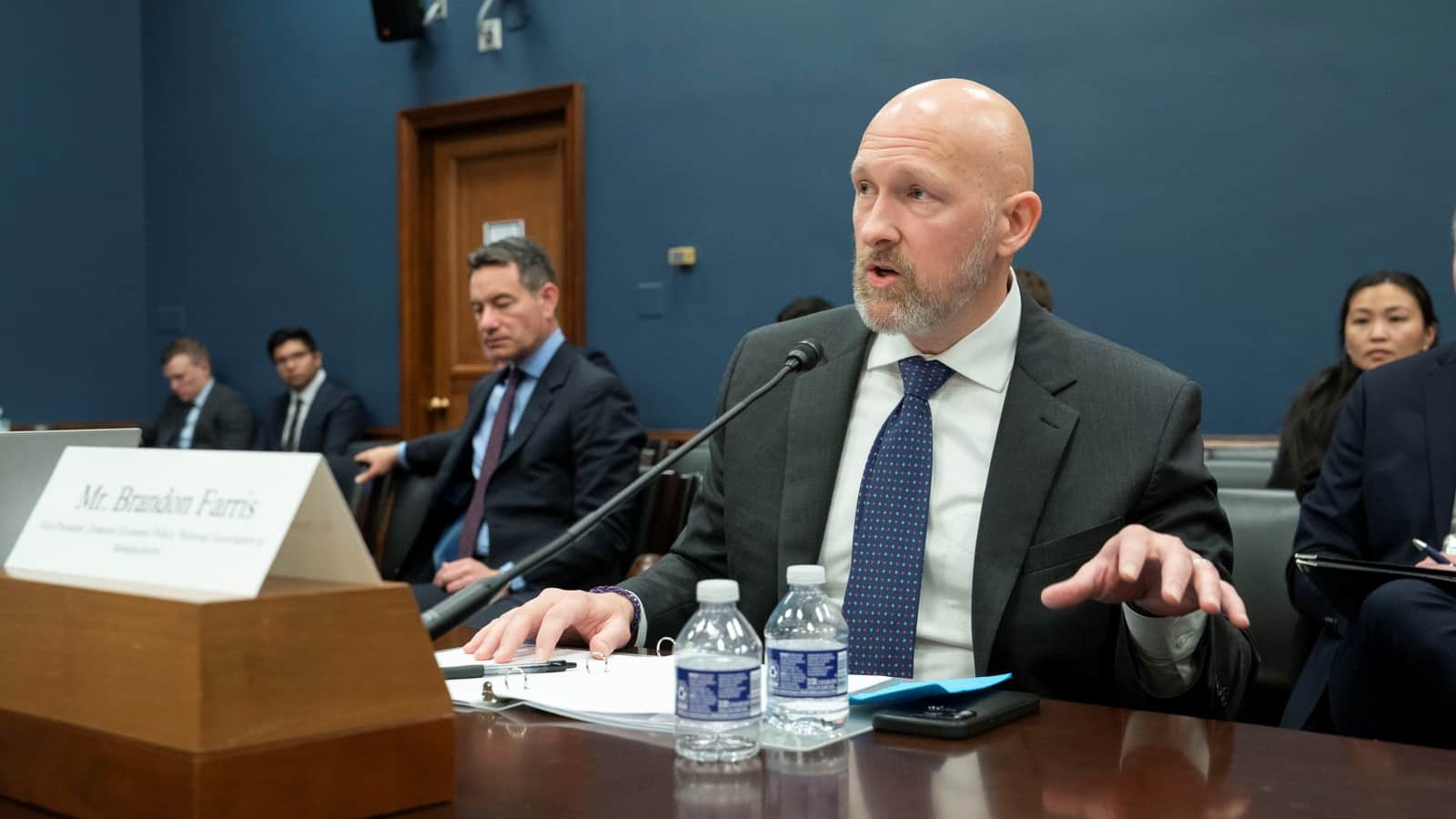
Small businesses are a critical part of both manufacturing and the U.S. economy at large, but the federal government’s costly regulatory onslaught is putting their continued existence at risk, the NAM told House lawmakers Wednesday.
What’s going on: “In the manufacturing sector, the majority of firms are small,” NAM Vice President of Domestic Policy Brandon Farris told the House Committee on Small Business during the hearing “Burdensome Regulations: Examining the Impact of EPA Regulations on Main Street.”
- “These firms are the backbone of the manufacturing supply chain, often producing key components for larger firms … [but] manufacturing faces significant headwinds in the form of the cost, complexity and uncertainty associated with overreaching and burdensome federal regulations.”
Why it’s important: The seemingly endless conveyor belt of new federal rules for the industry is costing manufacturers “shocking” amounts, disproportionately imperiling manufacturers—small ones in particular, Farris continued.
He cited NAM data finding that:
- The federal cost of regulations for manufacturers in 2022 was roughly $350 billion, a 25% increase from 2012; and
- The average manufacturer in the U.S. pays $29,100 per employee per year to comply with federal rules, while for the average small manufacturer, that price is $50,100.
Where it’s coming from: Farris cited other recent examples of onerous federal rulemaking, including:
- The Environmental Protection Agency’s recently finalized update to the National Ambient Air Quality Standard from 12 micrograms per cubic meter of air to 9 micrograms, a level approaching naturally occurring levels in many parts of the U.S., according to Farris, and one that “will make manufacturing in the U.S. less competitive globally”;
- The Department of Energy’s recent freeze of liquefied natural gas export permits, which, given increased European reliance on U.S. LNG since the start of Russia’s war in Ukraine, risks “leav[ing] our allies [and] our manufacturers in the cold”; and
- The Securities and Exchange Commission’s proposed climate disclosure rule, which “would increase manufacturers’ compliance costs dramatically, divert resources from job creation and growth, expose companies to increased liability, reveal proprietary and confidential information and ensnare wide swaths of the manufacturing supply chain.”
What must be done: Manufacturers aren’t asking legislators to cut corners, Farris said.
- Rather, they are seeking “regulatory certainty that can guide investment decisions and ensure that this country’s economic competitiveness is not outpaced or outflanked or overtaken by nations that do not share our values.”
To learn more about the high cost of overregulation, visit Manufacturers for Sensible Regulations, a coalition created by the NAM and members of the NAM’s Council of Manufacturing Associations and Conference of State Manufacturers Associations that’s intended to address the recent regulatory onslaught from federal agencies.
U.S. “Very Concerned” About Critical Minerals
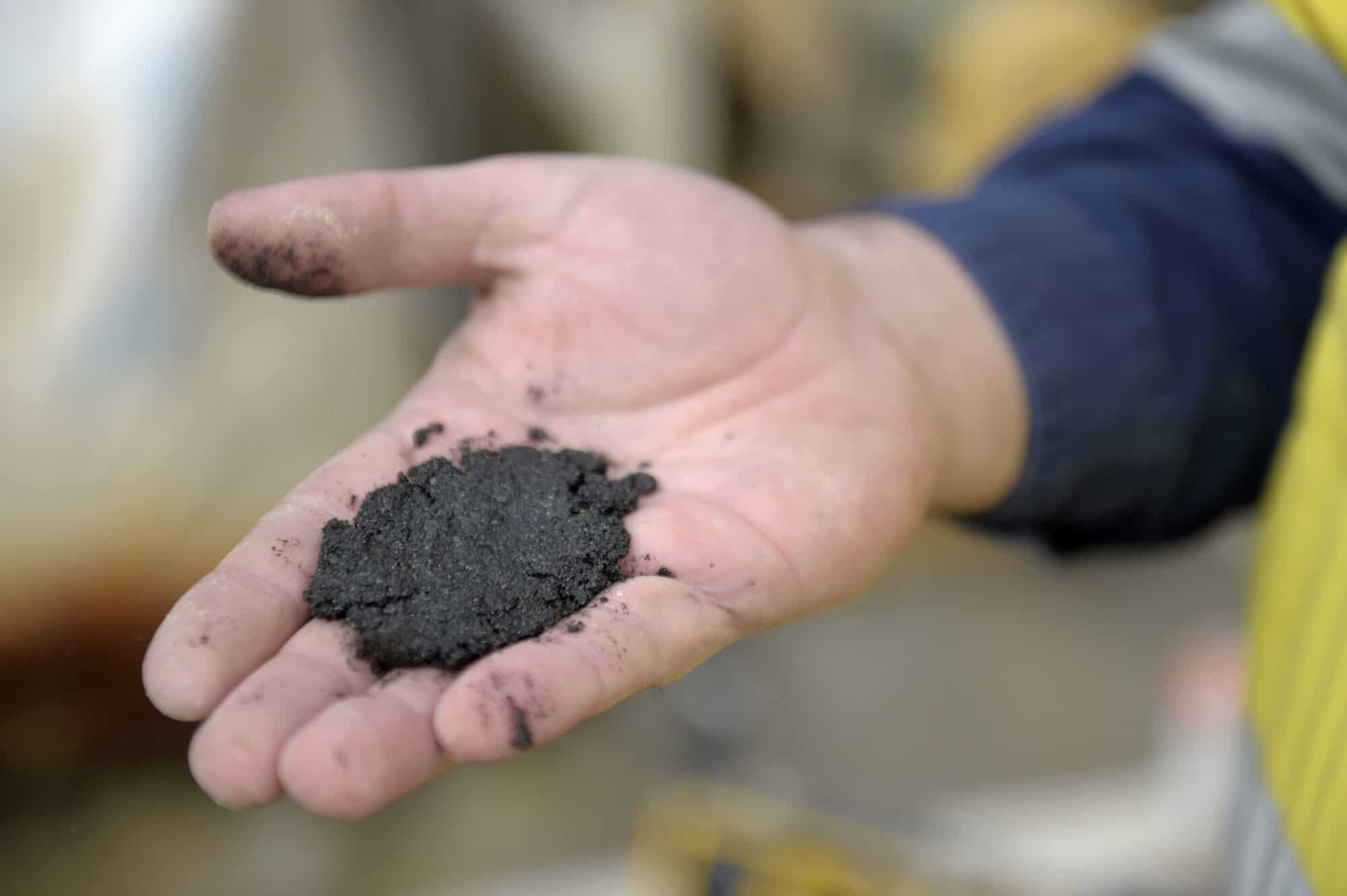
The Biden administration is “very concerned” about U.S. reliance on China for critical minerals, U.S. Energy Secretary Jennifer Granholm said Wednesday, according to CNBC.
What’s going on: China’s dominance in the world’s critical minerals supply chain is “one of the pieces of the supply chain that we’re very concerned about in the United States,” Granholm told the news outlet on the sidelines of the International Energy Agency’s 2024 Ministerial Meeting in Paris.
- China produces approximately 60% of all rare earth elements, which are critical to alternative-energy technologies, such as electric vehicles.
Why it’s important: “As part of a rapid uptick in demand for critical minerals, the IEA has warned that today’s supply falls short of what is needed to transform the energy sector,” according to the article.
What the administration is doing: Both production and processing of critical minerals “have to be addressed,” Granholm said.
- “And that’s why we are working very closely to ensure that we have identified which raw materials [or] critical minerals we need to be able to do our transition to a clean energy economy.”
The NAM says: “Other countries are taking all possible measures to develop domestic sources of critical minerals, and it should be a wake-up call to the U.S. that we need to be doing the same,” said NAM Vice President of Domestic Policy Brandon Farris. “We also need to reform our broken permitting system to get these projects operational as soon as possible.”
Rinnai Fights for Efficient Water Heaters
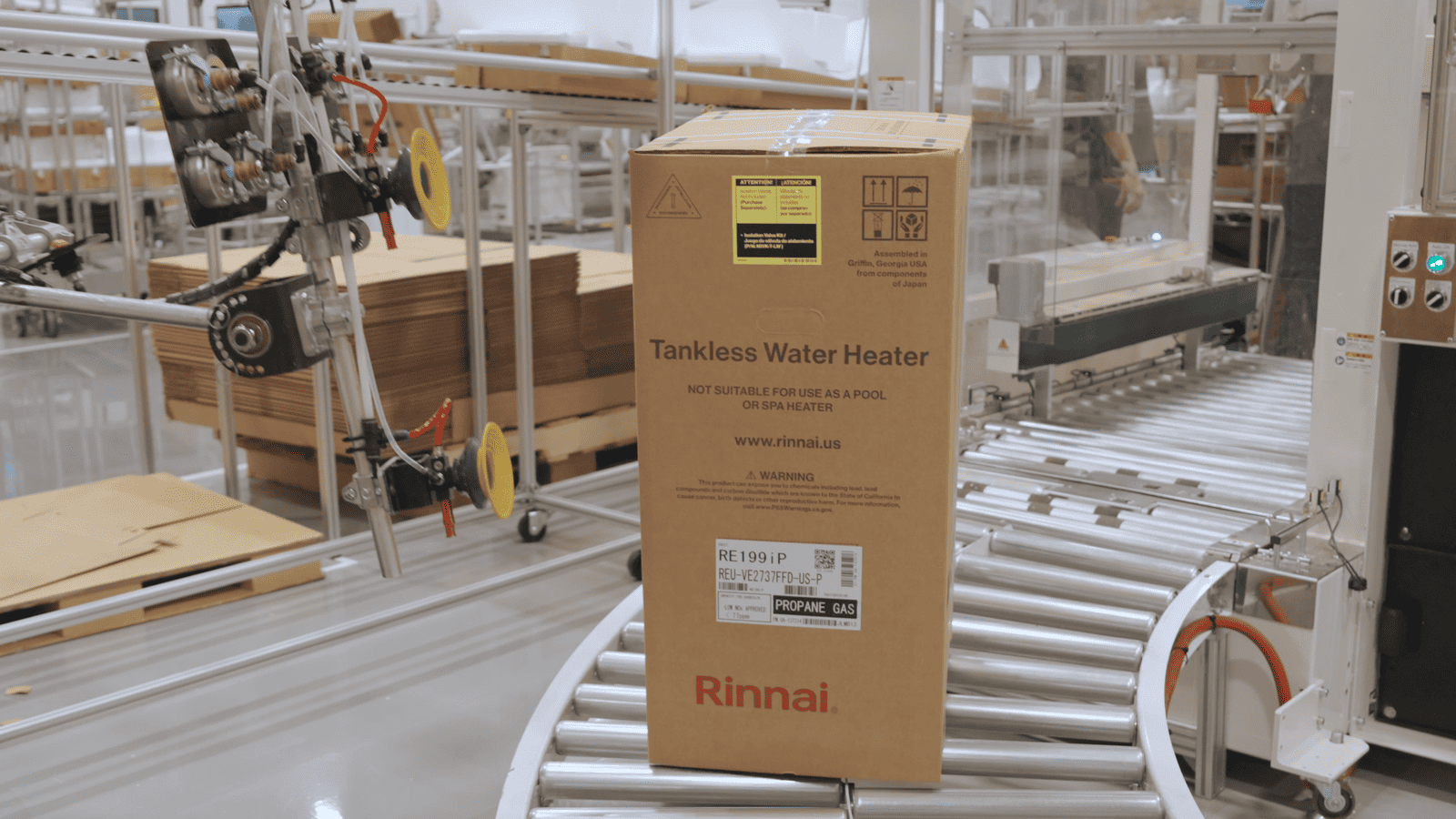
For nearly 50 years, Rinnai America Corporation has been selling innovative products in the United States. But as the Department of Energy prepares to unveil new rules in April, the water heater manufacturer is bracing for a big—and unnecessary—setback to its operations.
The background: There are a lot of water heater options on the market, and consumers must make a few key choices.
- First, they can choose between electric and gas heaters.
- Second, if they choose a gas heater, they can select one with a tank or one without.
- Finally, even tankless gas heaters come in two forms: condensing or noncondensing. Condensing heaters are used generally in colder environments, while noncondensing units are better for warmer climates.
The rule: The Department of Energy has proposed regulations on gas water heaters that would go into effect in 2029.
- However, the proposed efficiency requirements for tankless gas water heaters are so strict that noncondensing tankless units would not qualify—removing a cost-effective option from the market, and one that is in fact comparatively efficient.
- “The DOE is not taking into consideration what is best for the consumer, best for the industry and best for the environment overall,” said Frank Windsor, president of Rinnai America Corporation. “This is a shortsighted decision that doesn’t take into account the ramifications.”
The consumer impact: The DOE’s rule would restrict consumer choice severely by creating a de facto ban on noncondensing tankless heaters.
- “Consumers are getting hurt,” said Windsor. “Around 20% of consumers want tankless options”—including noncondensing tankless heaters.
The industry effect: Rinnai invested $70 million in 2022 in a new Georgia facility that makes noncondensing tankless gas heaters.
- “We built this new facility to make tankless water heaters that give consumers significant energy efficiency at a low price—and now the DOE is saying that, by 2029, you can’t make noncondensing units anymore,” said Windsor.
- “We’ve got close to 200 people working for us in Griffin, Georgia, so it impacts a lot of people.”
The innovation loss: According to Windsor, the rule is also counterproductive because it forces companies like Rinnai to reallocate funds that otherwise could go toward product innovation.
- “We’re going to have to spend money to retool that plant, and then we’ll get taxed on the capital for the plant that we can’t use anymore—and that’s all money that we would’ve spent on product innovation,” said Windsor.
The last word: “Why would you eliminate the availability of a cost-effective, efficient product and force the consumer to buy a more expensive option?” asked Windsor.
Learn more about the high costs of regulations, and the extreme burden on small manufacturers, in this recent NAM study. And check out Manufacturers for Sensible Regulations, a coalition created by the NAM and members of the NAM’s Council of Manufacturing Associations and Conference of State Manufacturers Associations, which is intended to address the regulatory onslaught coming from federal agencies in recent years.
